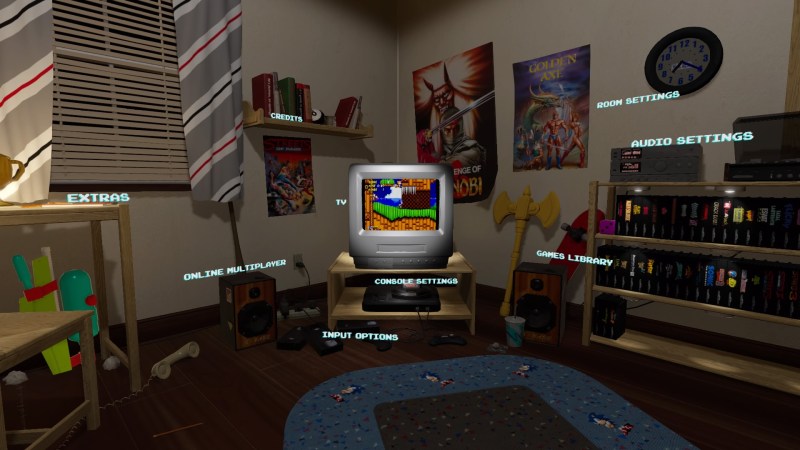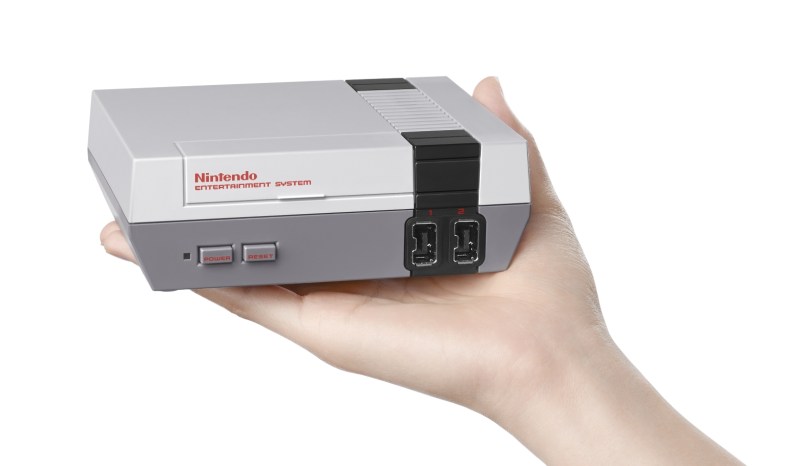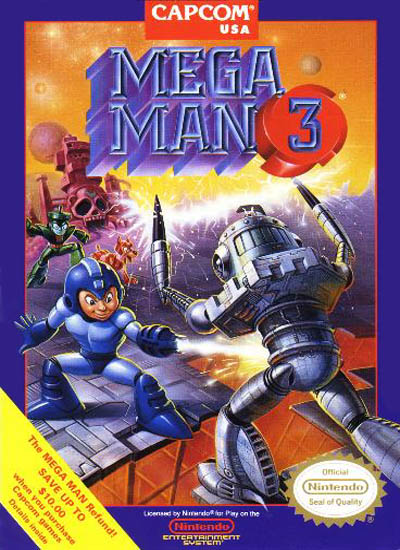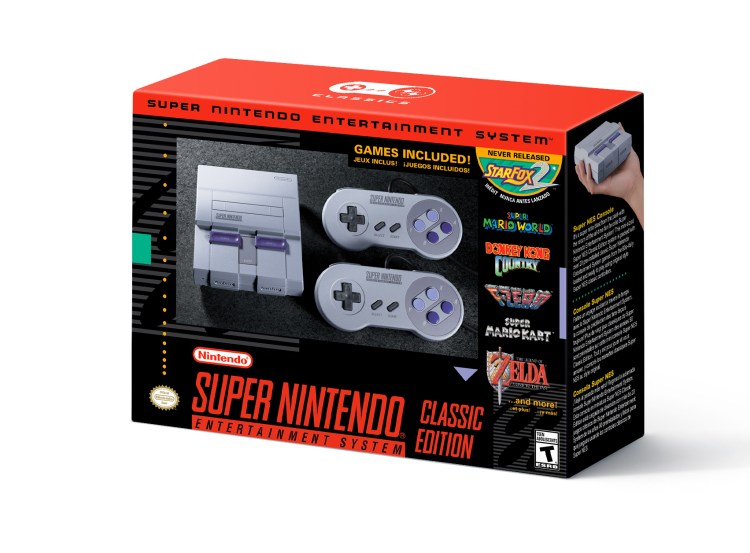When it comes to attracting the gaming public, big-name console manufacturers are looking to nostalgia as much as they are to online services and flashy peripherals. Just in the last few years, Nintendo, Sega, Sony, SNK, and others have thrown simple circuitry into a cute plastic shell to make players reminisce — and open their wallets.
As one of those individuals who yearns for the days of bits and beat-’em-ups, I have a nearly unhealthy fascination with the retro revival and all the products that have come with it. The thing is, only a few of these devices live up to their ancestors. Some of them, quite frankly, might give you the desire to let the past die. So, which ones are worth the money?
Before I go into this ranking, it’s important to mention that none of these classic consoles have an all-encompassing list of games. So, don’t go in expecting to play everything that you remember.

Above: The Sega Genesis Classics collection is worth your time.
If you really want to check out a specific game, your best bet would be to see if it has a PlayStation Network, Xbox Live, or Nintendo Virtual Console/eShop release. Also, a number of companies, including Sega and SNK, have released compilations that feature many old-school titles. The Sega Genesis Classics collection (available on PlayStation 4, Xbox One, and Nintendo Switch) is a great example.
One more thing, the only minis I’m going to go over are ones in my personal collection, so let’s get to it.
The kings of the classics
1. SNES Classic (Nintendo)
The Nintendo “Classics” might not have pioneered the mini-console craze, but they turned it into a full-blown phenomenon. When the Japanese gaming giant decided to come out with miniaturized tributes to their Nintendo and Super Nintendo Entertainment Systems, the world took notice. And it stood in line with cash at the ready. Now, nearly every gaming aficionado has a Classic, or they’re looking for one.
Both the NES and SNES Classics are incredibly similar. They feature a compact form factor, lovingly recreated controllers, intuitive interfaces, and terrific video output. Games look wonderful and play without much input lag (this will vary, depending on the television). You can also apply filters to get that tube-TV aesthetic — if you’re into that. Save states for every game are available as well.

Above: The SNES Classic takes you back to the early ’90s.
But what really makes these models shine is the game selection. And, for me, that’s why the SNES Classic is king. While it offers fewer titles than its NES big brother, the library here is incredible. Super Mario World, F-Zero, Contra III: The Alien Wars, Super Metroid, Final Fantasy III (VI), The Legend of Zelda: A Link to the Past, and Street Fighter II Turbo are just some of the highlights. As an added bonus, Nintendo went ahead and included Starfox 2, which never saw an official release until the SNES Classic hit store shelves.
These 16-bit experiences hold up better than many other older games. Just think about all the pixel-art indie titles out there. Where do you think they found their inspiration?
2. NES Classic (Nintendo)
Really, the NES Classic deserves to be at the top just as much as its SNES counterpart. While the SNES edition offers deeper gameplay and more technically impressive titles, the NES Classic is packed with iconic releases that ushered in a new dawn for gaming. The original three Super Mario titles, the first two Legend of Zelda games, Castlevania, Kirby’s Adventure, Ninja Gaiden, Punch-Out, and Mega Man 2 are some of the favorites that made the cut here.

Above: The NES Classic is a mini marvel.
The NES Classic features the same top-notch build quality and features as the SNES version. The one big difference here is that it comes with one controller, not two. If you want to play with someone else, however, you’ll need to hunt down an extra gamepad — which can be just as difficult to find as the console itself. This does make the core package a little cheaper, and you can use an SNES Classic controller if you happen to have one lying around.
Fun but flawed
3. Neo Geo Mini (SNK)
When I heard that SNK was making a mini-Neo Geo to celebrate the console-arcade hybrid’s 40th anniversary, I rushed to the first preorder page I could find. The final product itself might be the coolest device on this entire list, but it might just be the most infuriating.
The Neo Geo Mini has a comprehensive game list that should satisfy most fans of the original hardware. SNK initially released two minis: one for Japan, and an “International” version for other territories. Most of the games overlap between the two, but each mini has its own exclusive offerings. Personally, I found this frustrating because certain games that I wanted ended up only on the Japanese unit.
Regardless, among the Neo Geo Mini’s 40 games, you’ll get to play a slew of Metal Slug and King of Fighters titles, the remarkable Garou: Mark of the Wolves, Shock Troopers, Blazing Star, and the criminally overlooked Last Blade 2. The Neo Geo library (and, as a result, the Neo Geo Mini’s selection) has a heavy emphasis on fighting games. So if you’re not into that genre, you should probably move on to something else.
The Neo Geo Mini device is different than most tribute consoles because it has its own LCD screen and arcade-style controls. This makes it a rather striking addition to any player’s collection. While it’s fun to play these games on a tiny arcade cabinet, the novelty wears off quickly. And it’s worth noting that the stick has no gate or microswitches, so you’re basically playing with analog-style controls. This is less than ideal for the precise, arcade nature of Neo Geo games. The unit is perfectly playable, though, and the screen’s quality is surprisingly good. But I’d rather hook the console up to a TV, where I can have a more comfortable gameplay session.
And that’s where the Neo Geo Mini really falters. The video output is flat-out disappointing. I can only tolerate playing with the “image quality optimization” filter enabled, which gives the video an overly smoothed out appearance. I really don’t like the way it looks, but it’s even worse when I turn it off.
Also, I paid for one of the gamepads that SNK released in conjunction with the Neo Geo Mini, so I could get the most of my TV play. These look nearly identical to the Neo Geo CD pads that came out in the ’90s. But the new controllers don’t feature the satisfying microswitches from the CD system D-pads. To be blunt, the Neo Geo Mini controller is a letdown. The D-pad feels vague, and it’s an ever-present distraction when I’m playing. And for some reason, SNK changed the order of the buttons, so that adds an unnecessary layer to my aggravation.
Because it has its own screen, the Neo Geo Mini is actually a little more expensive than its classic colleagues. And you’ll have to spend more money if you want one of the gamepads. Overall, the Neo Geo Mini is a great idea with an equally great lineup of titles. SNK screwed up in the execution, however, and it failed to provide fans with the value they deserve.
Still, this little thing has plenty of style (just like its library), and if you’ve always wanted a Neo Geo, maybe it’s worth a shot.
4. Super Retro-Cade (Retro-Bit)
This is the quirkiest console on the list, thanks to its random, yet unmistakably charismatic, selection of titles. Retro-Bit released this device as a follow-up to its Generations plug-and-play mini-console. The Retro-Cade has a somewhat spartan design and comes with two basic, yet solid, controllers (although, I wish the buttons and D-pad were less stiff).
Like I mentioned earlier, the library of titles here is all over the place. You’ll find arcade brawlers like Double Dragon from Technos and Capcom’s fantastic Armored Warriors. You can jump into vertical shooters like 1942 and Varth. Or horizontal shooters like the wacky arcade romp Boogie Wings and R-Type III for the SNES. If you want puzzle games, you can check out multiple Magical Drop games. Oh, and even the obscure, Castlevania-like Holy Diver for the NES is here.

Above: Yeah, Mega Man 3 is on the Retro-Cade.
I should also mention that Bionic Commando (arcade and NES), Strider (arcade and NES), Joe and Mac, BurgerTime (NES), and multiple entries in the Final Fight franchise are on this thing.
The Retro-Cade’s interface is straightforward yet serviceable. You can adjust the video settings to display a stretched or original aspect ratio, but the games themselves look a bit too soft, with muted colors. Apparently, an updated version of the console is now available that lets you disable the smoothness filter, resulting in a crisper image. The “version 1.1” Retro-Cade also comes with a revised game list that includes titles like Crude Buster. But I’ve only had the chance to experience the original device.
Also, when using the Retro-Cade, I had to put my TV into game mode to get less input lag. This is the norm for most modern televisions when using gaming devices, but with some of the other consoles (like the Nintendo Classics), it wasn’t as big of a necessity.
Only for hardcore collectors
5. Sega Genesis Flashback HD (AtGames)
AtGames has been a pioneer of the retro trend, releasing a slew of products over the last few years. A good bulk of their offerings have focused on the legendary Sega Genesis. You’ve probably seen one of their numerous consoles on the shelves of your local department store. As much as AtGames’ consoles are ubiquitous, they are also divisive.
The Sega Genesis Flashback HD is the company’s most recent attempt at replicating Sega’s 16-bit juggernaut for modern audiences. It features HDMI output, save states, a respectable selection of built-in titles, and even a cartridge slot in case you have some Genesis games hidden away somewhere. It also comes with wireless six-button gamepads, but you can plug in original Genesis controllers, too.
Everything about this console is OK. The gamepads. The library. The gameplay. It’s all just OK. I think this console gets way more hate than it deserves. Yes, the emulation is far from great. And the interface can be awkward (you have to scroll through part of the menu using the face buttons and not the D-pad). But for many players, the Genesis Flashback HD is a viable option.

Above: You’re better off playing Sonic the Hedgehog 2 by getting the Sega Genesis Classics collection.
You have plenty of great pre-loaded titles to choose from. A healthy number of Sonic games, Phantasy Star II through IV, Golden Axe, the first three Mortal Kombat entries, Shining Force and Shining Force II, Vectorman, and Shinobi III are included. You even get some bonus Sega Master System and Game Gear games like the original Phantasy Star, Sonic Chaos, Fantasy Zone, and Psycho Fox. For some reason, AtGames also added in some shovelware titles that are complete throwaways, but you have enough memorable Sega hits here to keep you busy.
Like I said, the emulation isn’t perfect. Some games can have a less than ideal framerate for example. I also had to make sure my TV was set to game mode because I was noticing some input lag. So, be prepared for an experience that can be rough at times.
6. PlayStation Classic (Sony)
After I saw the game list for this console, I wanted to cancel my preorder. But due to my collecting obsession, I decided to give it a fair shot. Unfortunately, the PlayStation Classic is a disappointment on many levels.
Granted, the device itself is perfectly functional. The two controllers that it comes with do a great job of mimicking the original — but not DualShock — PlayStation pads.
But that’s where the positives end. The library is incomplete at best. Yes, Metal Gear Solid, Resident Evil: Director’s Cut, and Final Fantasy VII are on here. These are genre-defining (and redefining) titles. Syphon Filter and Super Puzzle Fighter II Turbo are still worth enjoying. But you won’t find Crash Bandicoot. Or Gran Turismo. Or — cue blood-curdling shriek — Castlevania: Symphony of the Night.
Well, at least you get to enjoy Cool Boarders 2 and Tom Clancy’s Rainbow Six.
I get it. Some of the missing games just received fancy remasters for the current generation of consoles. Others have licensing agreements that make things complicated. Still, the PlayStation Classic feels unfinished, and because of this, it fails as a time capsule for its namesake.

Above: The PlayStation Classic.
And then, when you figure in the PlayStation Classic’s barebones settings and uninspired interface, the problems become too numerous to ignore. More important, Sony decided to include the European PAL versions of some games, which means they run at 50Hz instead of 60Hz. As a player used to the American NTSC editions of these titles, the gameplay in the PAL releases feels different. Tekken 3, in particular, seems more sluggish than I remember. That’s just inexcusable.
7. Master System Evolution (Tectoy)
For a significant part of the world, the Sega Master System was the dominant console of the 8-bit era. Brazil fell under that domain. To cater to this market, Brazilian company Tectoy released the Master System Evolution.
This was an early classic console, coming out well before the recent boom of the last couple of years. As a result, the console only has a composite video output. And since Brazil is on the unique PAL-M standard, the system will display a black-and-white picture for people using American NTSC TVs without a converter of some kind. This also means the plug for the device will need an adapter to work with U.S. electrical outlets.
These issues will be dealbreakers for a lot of players, but for those who want to experience some true gems of the Master System library, this console is a decent option if you have the right setup. Shinobi, Action Fighter, Black Belt, Kenseiden, Thunder Blade, Enduro Racer, the Alex Kidd series, and even the excellent port of arcade-stalwart Rastan are all here. The game list is pretty robust but does include some shovelware — similar to the Genesis Flashback HD. The Master System Evolution console itself is pretty solid, and the controllers work well — even though they have the form factor of the six-button Sega Genesis gamepad.
The aforementioned issues and the fact that it’s not the easiest console to acquire — along with some significant omissions in the library, such as Phantasy Star — put this at the bottom of the list. For me, however, this system is an endearing and important part of my collection.

